How to grow Ajuga
A member of the mint family and often commonly called Bugle.
Ajuga are ground covering hardy perennials which can be grown for beautiful foliage as well as for its flowers, which appear from late spring through to summer. Most are evergreen and like moist, well-drained soil in part sun/part-shade. They will even grow in exposed sites, rockeries, baskets and at the front of decorative borders so are truly versatile.
The nectar-rich blooms and much loved by bees and other pollinators, while the robust foliage will not usually be favoured by slugs and snails. Easy to propagate by division in spring or by removing and potting up offshoots. Most Ajuga will grow to a height of 20-45cm with a spread of 60-90cm and will readily naturalise given the right conditions.
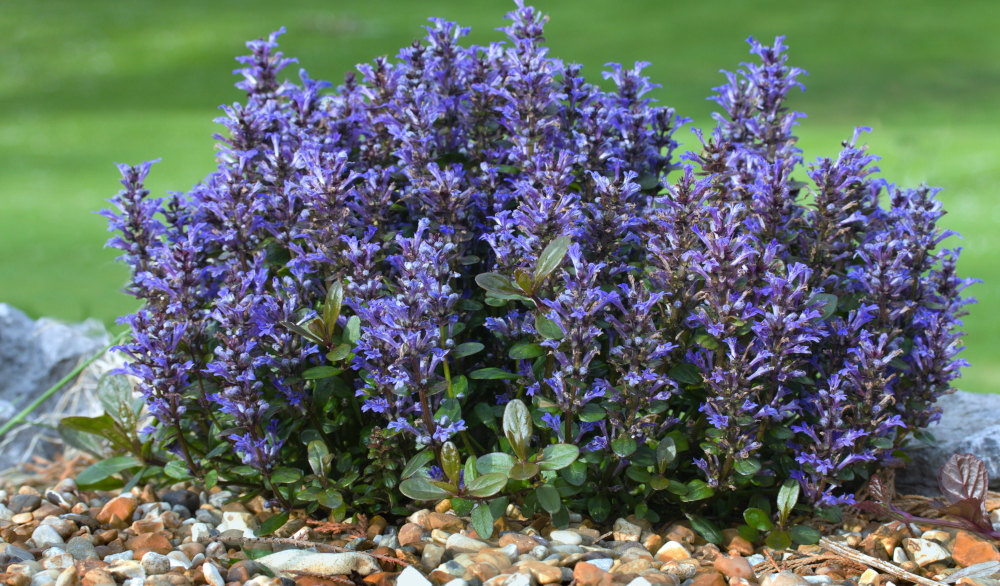
Key Information
Soil pH
Position
Hardiness

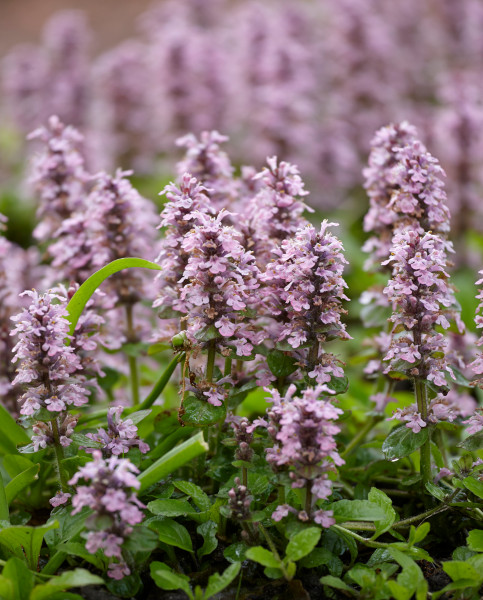
Where & when to plant Ajuga
Grown mainly for its robust creeping evergreen foliage, Ajuga is an excellent choice for groundcover or softening border edges and pathways. Avoid planting directly next to lawned areas as the roots will spread into your turf and invade your lush grass. Border edging can be used as a solution in this instance.
A useful plant for a shady slope which can help with soil erosion or slipping due to its underground root system and mat of weed-suppressing foliage.
An added bonus are the pretty violet blue or creamy white flower spikes which add interest from late spring and are adored by pollinators.
Plant Ajuga in early spring if possible – this will enable the root system to become established before summer. A spot in partial shade encourages the best foliage colour and size. Growing in full sun results in smaller leaves which can be susceptible to scorching, and full shade will mean less flowers.
Soil which remains moist and is well-drained is necessary for Bugle plants to flourish.
How to plant Ajuga
To plant Ajuga reptans in the ground, dig planting holes with a gardening trowel a little wider than the containers your plants arrived in. For an organic look, group plants in odd numbers in drifts near the front of a border or edge of a path. Space plants 30-50cm apart to allow room to creep and enable air circulation which will help to avoid problems such as powdery mildew and crown rot.
Ajuga grows well in all soil pH levels but will thrive best in acidic soil between 3.7 to 6.5 as it is naturally a woodland plant. If you garden on heavy soil, add some grit to your planting holes first before a handful of ericaceous or homemade compost to help young plants off to the best start.
Carefully slide the plants out from their containers and gently loosen the roots before popping into the holes and filling in around the edges with soil. Firm into place with your hands and water the plants generously. Avoid planting Ajuga reptans too deeply as these plants can be susceptible to crown rot.
Ajuga also grows well in containers and can be useful for underplanting larger trees or shrubs as it will add interest to bare soil.

What to plant with Ajuga
The glossy foliage of Ajuga looks fantastic when spilling over onto the edge of paving slabs, especially after rainfall. Other plants which sparkle and shine after a shower of rain and will compliment Ajuga include Heucheras, Lupins, Hostas, and Alchemilla Mollis. These plants all thrive in similar conditions and can be planted behind Ajuga as the next layer of a border.
Versatile ajugas make great plants for rockery gardens and modern planting schemes but are perhaps most at home in the shadier area of cottage garden with space to romp and spread next to Ferns, Bergenia, Pulmonaria, Astilbe, or Brunnera.
Grow in pots or shallow vintage containers such as stone troughs or urns where the natural spreading and spilling habit will quickly make these plants look as though they have been there for years.
Try combining with plants which share a similar growth habit like Creeping Thyme, Erigeron karvinskianus, Aubretia, or Campanula at the edge of, or between garden slabs.
Our friendly and helpful Hayloft Customer Care Team will be more than happy to help if you need any further advice for your Ajuga plants.
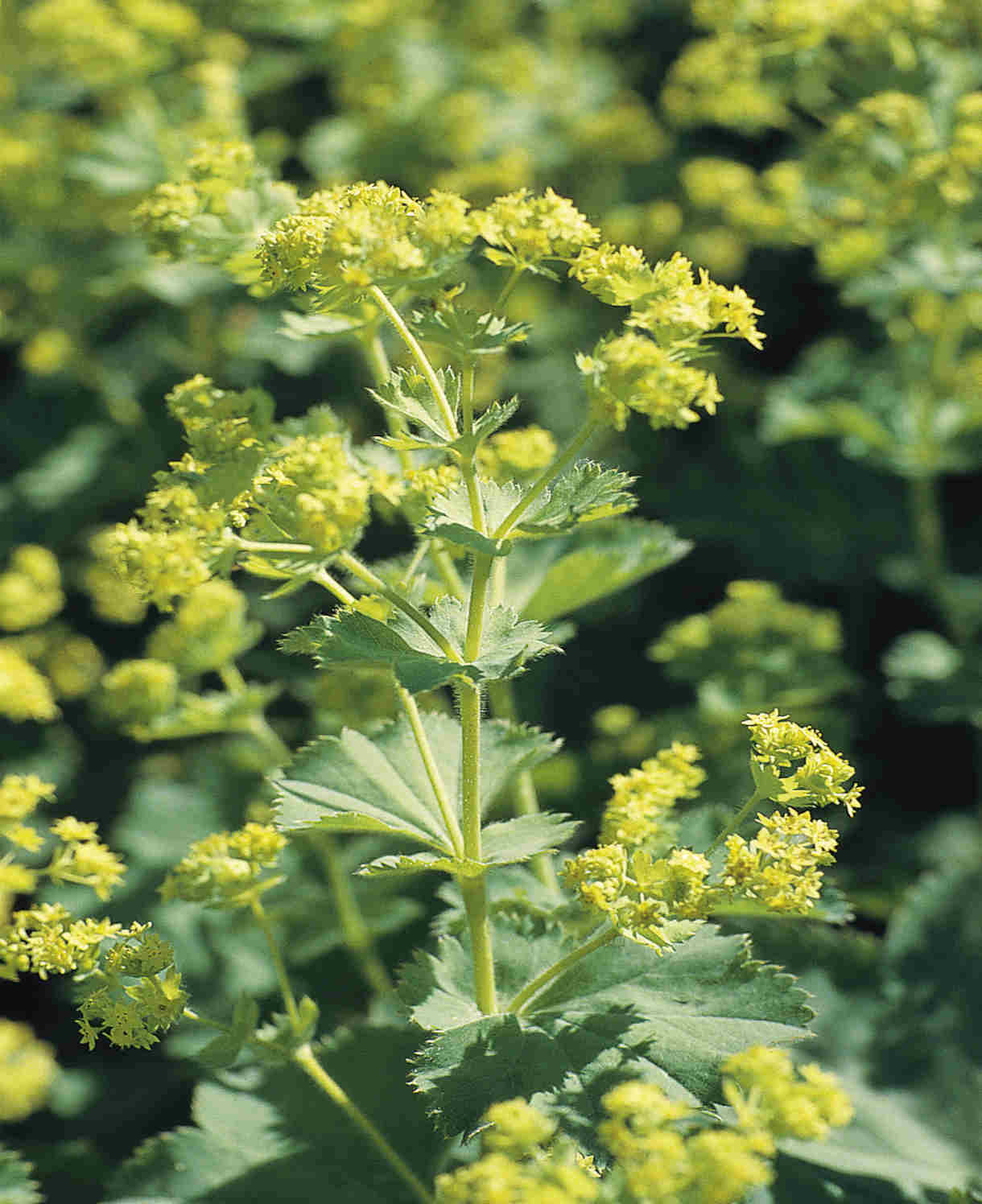
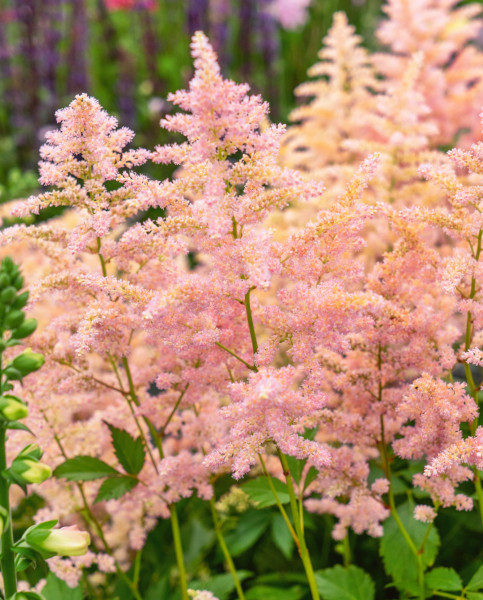
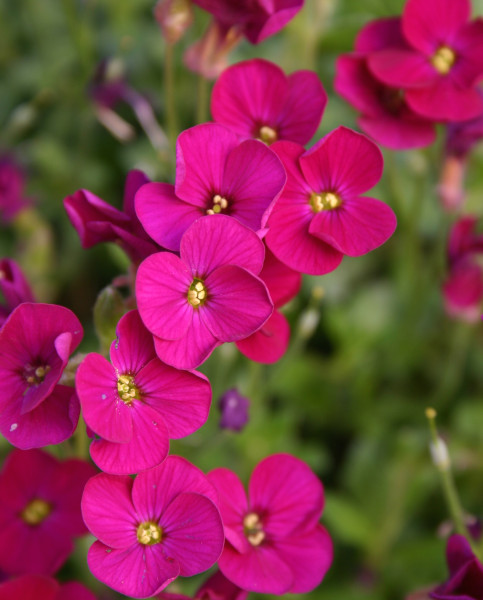
How to care for Ajuga
Water young plants every other day in dry or warm weather for the first week or two after planting before gradually easing off watering. Once established in the correct spot, Ajuga reptans are drought tolerant plants and natural rainfall should provide ample hydration.
Feeding should also not be necessary unless you garden on extremely poor soil. If this is the case, feed with balanced liquid fertiliser in spring once a week in the morning.
Deadhead faded blooms in late summer to avoid plants spreading unnecessarily by seed. This can be done by hand with scissors or secateurs, or by shears or a lawnmower on a high setting for a larger area.
How to propagate Ajuga
In much the same way as its cousin the mint, Ajuga reptans spreads vigorously via horizontal underground runners and stems, known as stolons. Once your plants have reached a desirable spread, these runners should be kept in check by pruning and digging or pulling them up twice a year.
Crowded plants can be dug up and divided every 2-3 years to maintain vigour and produce more plants for your garden. Dig up clumps in spring or autumn with a garden fork and gently pull apart into smaller sections. Particularly dense sections may be difficult to split and can be cut apart with a clean sharp knife.
Pot up smaller divisions into pots of multipurpose compost and grit and grow on in a cool place until roots have filled the pots, or plant them straight into fresh planting holes in your garden as before.




